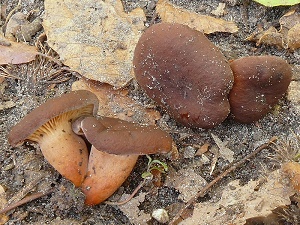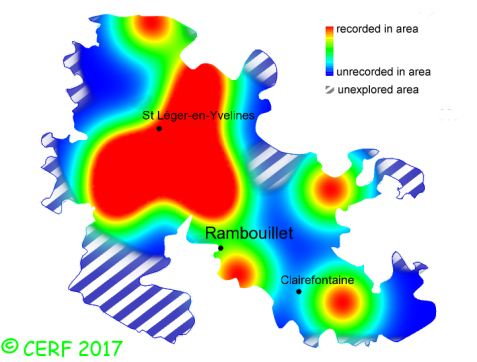| Lactarius serifluus (De Cand.:Fr.) Fr. |
|
|
|
|
|
|
The cap is sepia-brown to chestnut-brown, convex then depressed, funnel-shaped, often with a clear central umbo; its margin is smooth. The cap surface is not viscid nor sticky. The stem is same colour as cap or paler, cream to orange-brown. The flesh is cream to buff, unchanging; its taste is mild; the odour is unpleasant, of shield bug; its texture is grainy (breaking like a chalk stick), exuding when cut an unchanging watery milk. The gills are cream then ochre-orange, slightly decurrent, crowded . The spore print is cream (C) with slight salmon tinge. This species is mycorrhizal. It grows on the ground, in moist areas : ruts, close to ponds or dried puddles, with oak, beech, various deciduous trees. The fruiting period takes place from July to November.
Distinctive features : reddish-brown cap, often umbonate; watery and unchanging milk; odour of bug; in damp places Lactarius serifluus is infrequent and scattered in the forest of Rambouillet, and is infrequent, more generally speaking . | ||
|
page updated on 14/01/18

